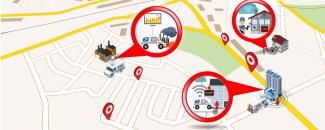The Postal Service and Cities: A "Smart" Partnership
September 26, 2016 (RARC-WP-16-017)
- City governments around the country are taking on “smart city” initiatives that use big data technology to gather information and improve life for their residents.
- It is often difficult for cities to deploy this technology in enough locations to collect actionable data. The Postal Service, because of its vast presence in every city, could attach sensors to its physical infrastructure to quickly gather data from around the city.
- The OIG identified five pilot projects in which the Postal Service could participate in the short term that would involve little to no financial or operational commitment.
Urban populations in the United States are increasing. As a result, cities are turning to new technologies to better connect with and serve their citizens. These “smart” projects aim to use data and analytics to, among other things, decrease traffic congestion, cut pollution, and improve infrastructure. However, cities often experience difficulties in collecting, storing, and analyzing large amounts of data.
The Internet of Postal Things, a concept first described by the Office of Inspector General in a 2015 white paper, could help cities meet their smart city goals. Sensors and other data collection devices attached to the ubiquitous postal network could provide cities with an unparalleled means to collect the data necessary for these smart city initiatives.
To explore this idea further, the OIG conducted interviews with city, university, and private-sector stakeholders involved in smart city projects. Among other things, these interviews identified five concrete opportunities for the Postal Service to partner with cites on pilots:
- Assessing city road conditions by analyzing images from vehicle-mounted cameras in Pittsburgh, PA
- Using vibration data collected by vehicle sensors to monitor the structural integrity of bridges in Pittsburgh, PA
- Collecting data on water pressure and leakages from fire hydrants and underground pipes in Montgomery County, MD
- Helping counteract blight by identifying early warning signs such as vacant properties in the New York capital region
- Measuring the prevalence of air pollutants across the city through vehicle-mounted sensors in Portland, OR
Becoming involved in these projects could benefit both cities and the Postal Service itself. However, the Postal Service would first need to address questions surrounding data ownership, privacy, and security as well as selecting a suitable business model. The time is right for the Postal Service to begin to think about these questions and to explore the opportunity to extract new value from its infrastructure.

